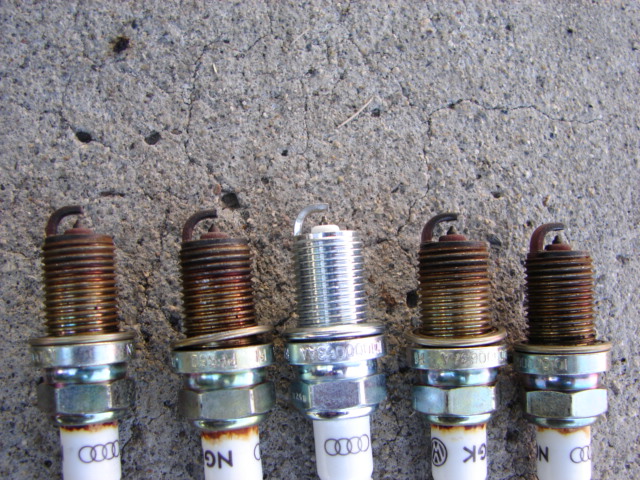Quote:
6.3 What fuel property does the Octane Rating measure?
The fuel property the octane ratings measure is the ability of the unburnt
end gases to spontaneously ignite under the specified test conditions.
Within the chemical structure of the fuel is the ability to withstand
pre-flame conditions without decomposing into species that will autoignite
before the flame-front arrives. Different reaction mechanisms, occurring at
various stages of the pre-flame compression stroke, are responsible for the
undesirable, easily-autoignitable, end gases.
During the oxidation of a hydrocarbon fuel, the hydrogen atoms are removed
one at a time from the molecule by reactions with small radical species
(such as OH and HO2), and O and H atoms. The strength of carbon-hydrogen
bonds depends on what the carbon is connected to. Straight chain HCs such as
normal heptane have secondary C-H bonds that are significantly weaker than
the primary C-H bonds present in branched chain HCs like iso-octane [21,22].
The octane rating of hydrocarbons is determined by the structure of the
molecule, with long, straight hydrocarbon chains producing large amounts of
easily-autoignitable pre-flame decomposition species, while branched and
aromatic hydrocarbons are more resistant. This also explains why the octane
ratings of paraffins consistently decrease with carbon number. In real life,
the unburnt "end gases" ahead of the flame front encounter temperatures up
to about 700C due to compression and radiant and conductive heating, and
commence a series of pre-flame reactions. These reactions occur at different
thermal stages, with the initial stage ( below 400C ) commencing with the
addition of molecular oxygen to alkyl radicals, followed by the internal
transfer of hydrogen atoms within the new radical to form an unsaturated,
oxygen-containing species. These new species are susceptible to chain
branching involving the HO2 radical during the intermediate temperature
stage (400-600C), mainly through the production of OH radicals. Above 600C,
the most important reaction that produces chain branching is the reaction of
one hydrogen atom radical with molecular oxygen to form O and OH radicals.
The addition of additives such as alkyl lead and oxygenates can
significantly affect the pre-flame reaction pathways. Antiknock additives
work by interfering at different points in the pre-flame reactions, with
the oxygenates retarding undesirable low temperature reactions, and the
alkyl lead compounds react in the intermediate temperature region to
deactivate the major undesirable chain branching sequence [21,22].
The antiknock ability is related to the "autoignition temperature" of the
hydrocarbons. Antiknock ability is _not_ substantially related to:-
1. The energy content of fuel, this should be obvious, as oxygenates have
lower energy contents, but high octanes.
2. The flame speed of the conventionally ignited mixture, this should be
evident from the similarities of the two reference hydrocarbons.
Although flame speed does play a minor part, there are many other factors
that are far more important. ( such as compression ratio, stoichiometry,
combustion chamber shape, chemical structure of the fuel, presence of
antiknock additives, number and position of spark plugs, turbulence etc.)
Flame speed does not correlate with octane. {emphasis added}

